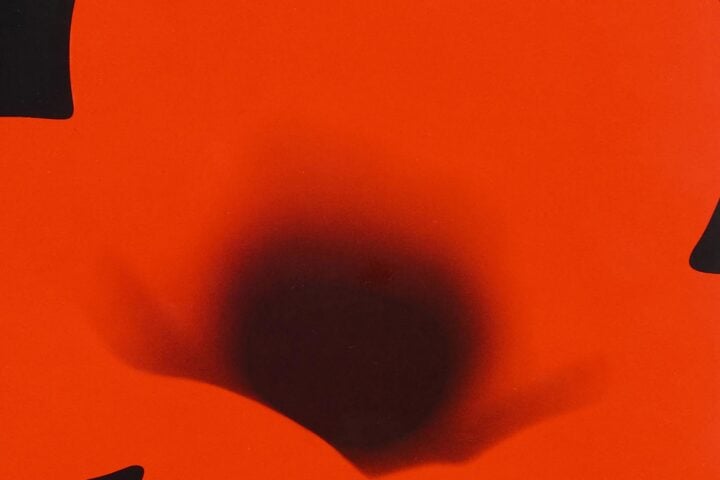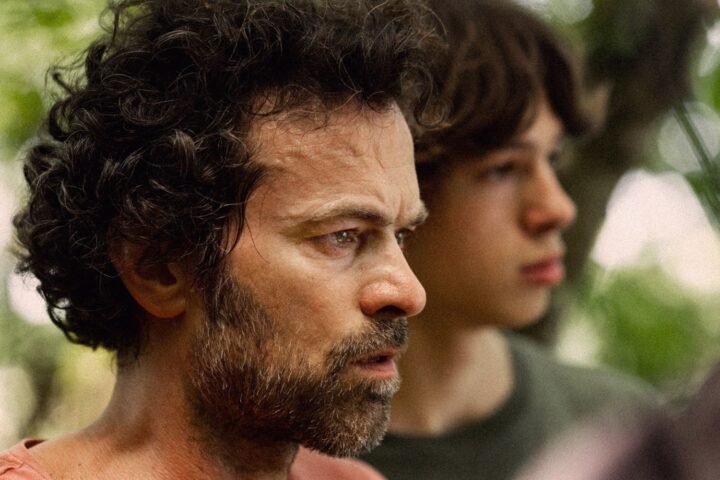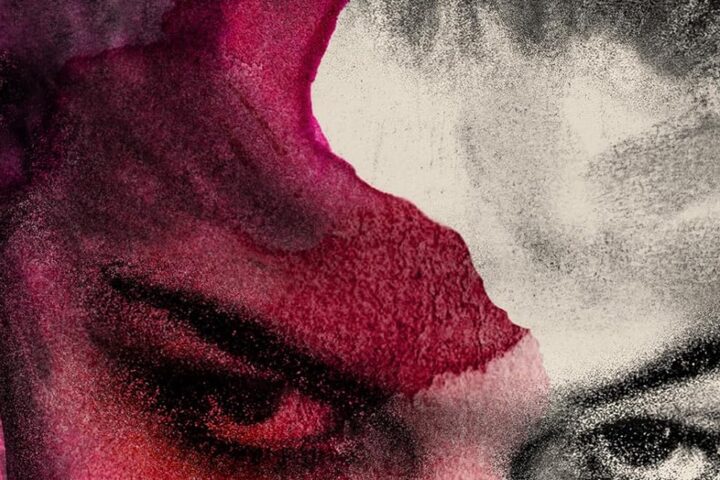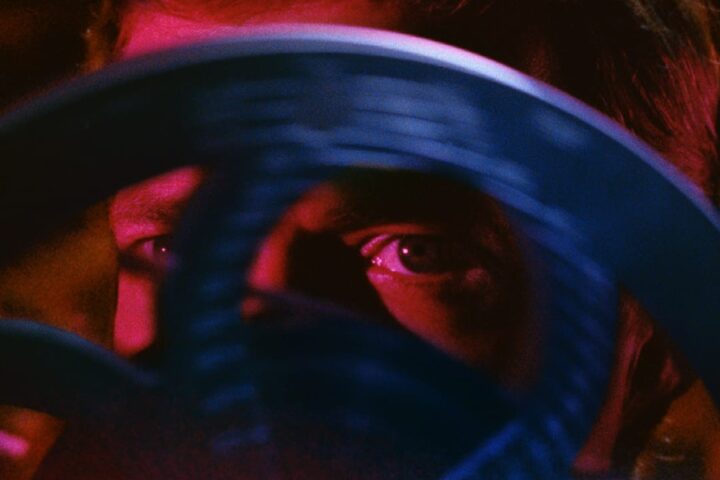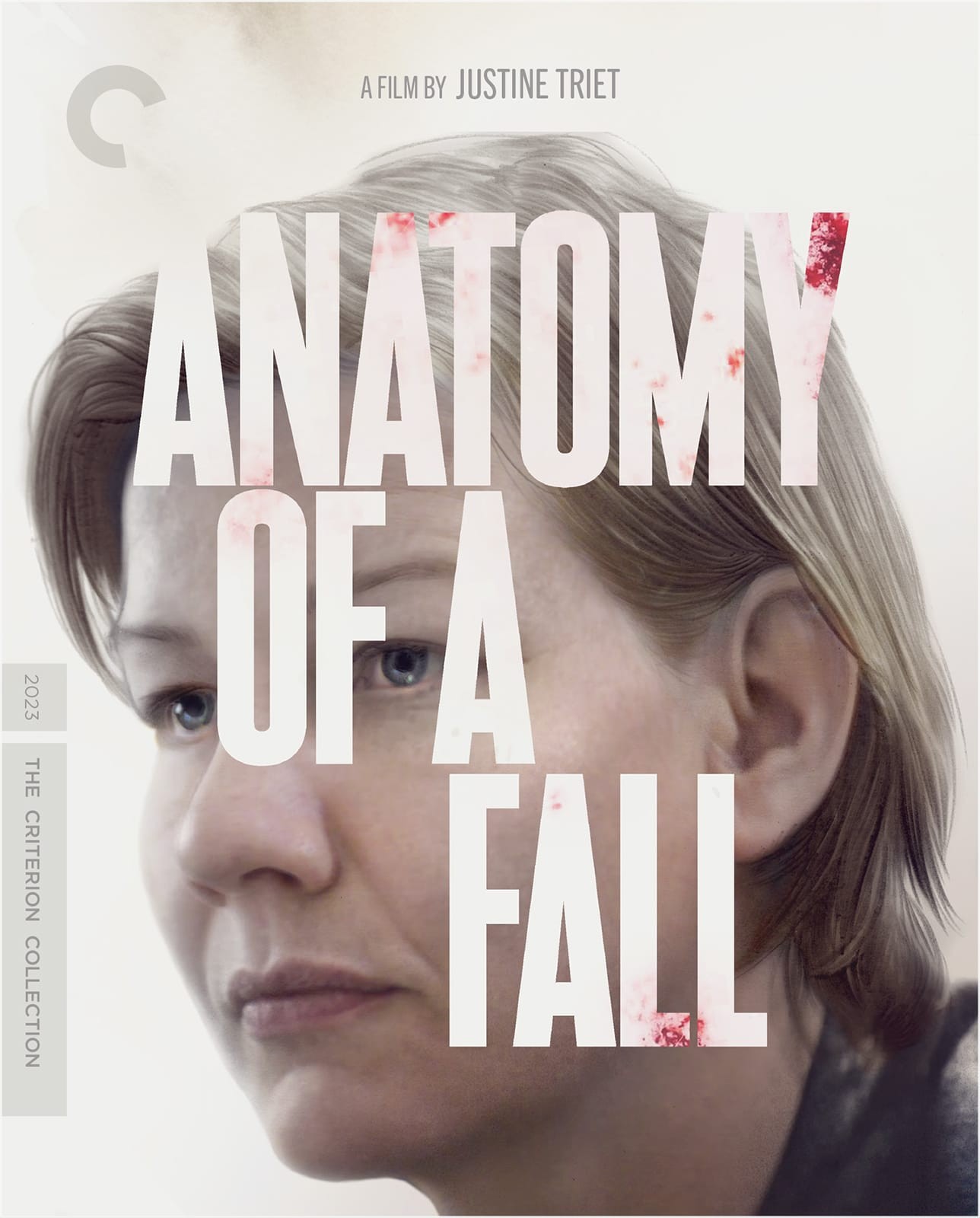 Justine Triet’s Anatomy of a Fall chaotically drops us into the chalet of Sandra (Sandra Hüller), Samuel (Samuel Theis), and their visually impaired young son, Daniel (Milo Machado Graner), in the French Alps. Sandra, a successful German writer, is in the midst of an interview with a visiting journalist (Camille Rutherford) that an unseen Samuel attempts to derail with his ceaseless blaring of an instrumental cover of 50 Cent’s “P.I.M.P.” from his upstairs office. Once her husband has succeeded at his mission, Sandra sends the journalist home before going upstairs to work herself. Not too long after, Samuel is found dead outside the house by Daniel, who had been walking around the property with the family dog.
Justine Triet’s Anatomy of a Fall chaotically drops us into the chalet of Sandra (Sandra Hüller), Samuel (Samuel Theis), and their visually impaired young son, Daniel (Milo Machado Graner), in the French Alps. Sandra, a successful German writer, is in the midst of an interview with a visiting journalist (Camille Rutherford) that an unseen Samuel attempts to derail with his ceaseless blaring of an instrumental cover of 50 Cent’s “P.I.M.P.” from his upstairs office. Once her husband has succeeded at his mission, Sandra sends the journalist home before going upstairs to work herself. Not too long after, Samuel is found dead outside the house by Daniel, who had been walking around the property with the family dog.
As its title suggests, that series of events will be thoroughly dissected over Anatomy of a Fall’s runtime, first at the home and then in the courtroom. Did Samuel’s frequent bouts of anger and depression drive him to throw himself out the window of his attic office, or was Sandra involved? For her part, Sandra claims to have fallen asleep when the act occurred. The French authorities, though, aren’t buying it, surmising that the trajectory of Samuel’s fall may not be conducive with the suicide theory. (This suspicion is reached through a few perversely comic experiments where the investigators restage the fall with a life-size dummy.) Alongside revelations of the couple’s fraught relationship, including an audio tape of a volatile argument from the day before the incident, Sandra is subsequently indicted for Samuel’s murder.
At first, it seems like Anatomy of a Fall may turn into a courtroom spin on Basic Instinct. Like Sharon Stone’s Catherine Tramell, Sandra is a famous novelist whose books seem to contain troubling portents of the crime she’s accused of. Coupled with her outwardly cold demeanor, the film baits us into thinking Sandra could be a criminal mastermind hiding in plain sight (that she speaks French poorly also positions her as an “other” during the Paris-set trial). Hüller, adept at playing absorbingly inscrutable characters, embodies Sandra as the perfect enigma, genial and achingly sympathetic one moment and oddly aloof at another. She makes every one of Sandra’s reactions to Samuel’s death—too excessive here, too muted there—a cause for further study.
But as the trial proceeds, it’s clear that Triet’s film has more on its mind than the simple question of Sandra’s innocence or guilt, a position that becomes more or less clear far before the final verdict is handed down. Instead, Anatomy of a Fall is more preoccupied with the problematic reasoning behind why the prosecution (and eventually the public) might think Sandra is guilty. With the prosecution’s case centering solely around circumstantial speculation drawn from the couple’s tense relationship history, the trial is really an anatomy of a marriage, one where Sandra and Samuel reacted in markedly different ways to the accident that caused their son’s blindness and inadvertently created a gaping chasm between them.
But with Samuel out of the picture, only Sandra has to answer for any potential wrongdoing. Whether it’s her sporadic infidelity or her ruthless ambition, the woman proceeds to get raked over the coals for nothing less than the entirety of her life’s choices. The issue of compromise is repeatedly litigated in an attempt to surmise who had to give up more. Was Samuel unfairly held back from pursuing his own creative ambitions due to being burdened with more of the domestic load? Yet Sandra agreed to move to her husband’s homeland at his urging, despite feeling lonely and out of place there ever since. The protracted courtroom scenes are both intellectually stimulating and appropriately exhausting as this debate rages on.
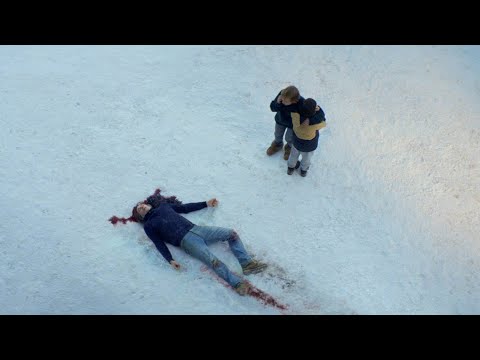
Triet and Arthur Harari’s script has a sly sense of humor, particularly when it comes to the actions of the showboating lead prosecutor (Antoine Reinartz). Puffing his chest out while taunting his target at every turn, he exacerbates the Kafkaesque nightmare Sandra finds herself in with each one of his sneering insinuations. A not-so-casual sexism expectedly emerges as well, in examinations of the couple’s reversal of gender roles or when Samuel’s therapist makes an incredulous appearance to relay dubious private anecdotes to smear Sandra’s image.
At a certain point, the prosecution seems to wholeheartedly lean into the view that even if Samuel did kill himself, Sandra is still at fault for pushing him to do so. The case gets increasingly absurd when, in discussing how Samuel’s musical interruptions during his wife’s interview would have likely angered her, the prosecutor underlines his argument by emphatically declaring that 50 Cent’s “P.I.M.P.” is “a deeply misogynistic song.”
For all the complex psychological and social dilemmas at play in Anatomy of a Fall, it can be a little disappointing, then, how the eventual denouement feels somewhat pat. The entire film builds to the final day’s testimony from Daniel, the only witness to the fall, even though the vague sense of what he heard that day was further obscured by his father’s ear-splitting music. Up until the end, Daniel is mostly kept in a state of confusion and embarrassment at the trial as his parent’s relationship is intimately exposed in front of him. But once he finally takes the stand, he launches into a lucid story that definitively puts the whole case to rest.
Thankfully, the script has still built up enough goodwill at this point to mostly forgive the way that the film devolves into a generic courtroom drama. At its best, Anatomy of a Fall is nothing less than a rigorous modern treatise on the knotty interpersonal dynamics of long-term relationships and how conveniently they can be distorted when exposed to public scrutiny.
Image/Sound
It’s tempting to wonder if Anatomy of a Fall’s thematic concerns with representation and media might have been bolstered had the film actually been shot on celluloid. Perhaps due to the shooting conditions, instances of chroma noise are evident across this 2K digital presentation, even outside of the grainy police and news footage. There’s a pinkish quality to the skin tones across the board, and detail is somewhat lacking. In comparison, the 5.1 surround DTS-HD Master Audio soundtrack is practically a workhorse, as dialogue is crystal clear throughout, and the intrusions of “P.I.M.P.” and Daniel’s piano pieces are effectively and maddeningly intense.
Extras
In a new interview, Justine Triet discusses her interest in mounting an “exhaustive” courtroom drama and challenging the tropes of the genre. She also pledges allegiance to spontaneity on the set, which is somewhat ironic given that the rationale for the excision of at least one of the deleted scenes that are also included in this release is that the actors were too carefree during their performances. But Triet’s justifications for what didn’t make the cut are all completely understandable, and, if anything, her commentary over those deleted scenes makes an excellent case for her as a supreme architect of controlled chaos. Rounding out the extras are a puffy short program about Messi, the dog who plays Snoop, featuring trainer Laura Marin, audition footage of actors Milo Machado Graner and Antoine Reinartz, fascinating rehearsal footage of Machado Graner and fellow actor Sandra Hüller, and a booklet essay by critic Alexandra Schwartz focused on its themes of judgment and how they’re traceable to Triet’s other work.
Overall
This Anatomy of a Fall release is slim on supplements, and the image presentation is iffy, but the film still builds a strong case as one of the best courtroom dramas in recent memory.
Since 2001, we've brought you uncompromising, candid takes on the world of film, music, television, video games, theater, and more. Independently owned and operated publications like Slant have been hit hard in recent years, but we’re committed to keeping our content free and accessible—meaning no paywalls or fees.
If you like what we do, please consider subscribing to our Patreon or making a donation.

